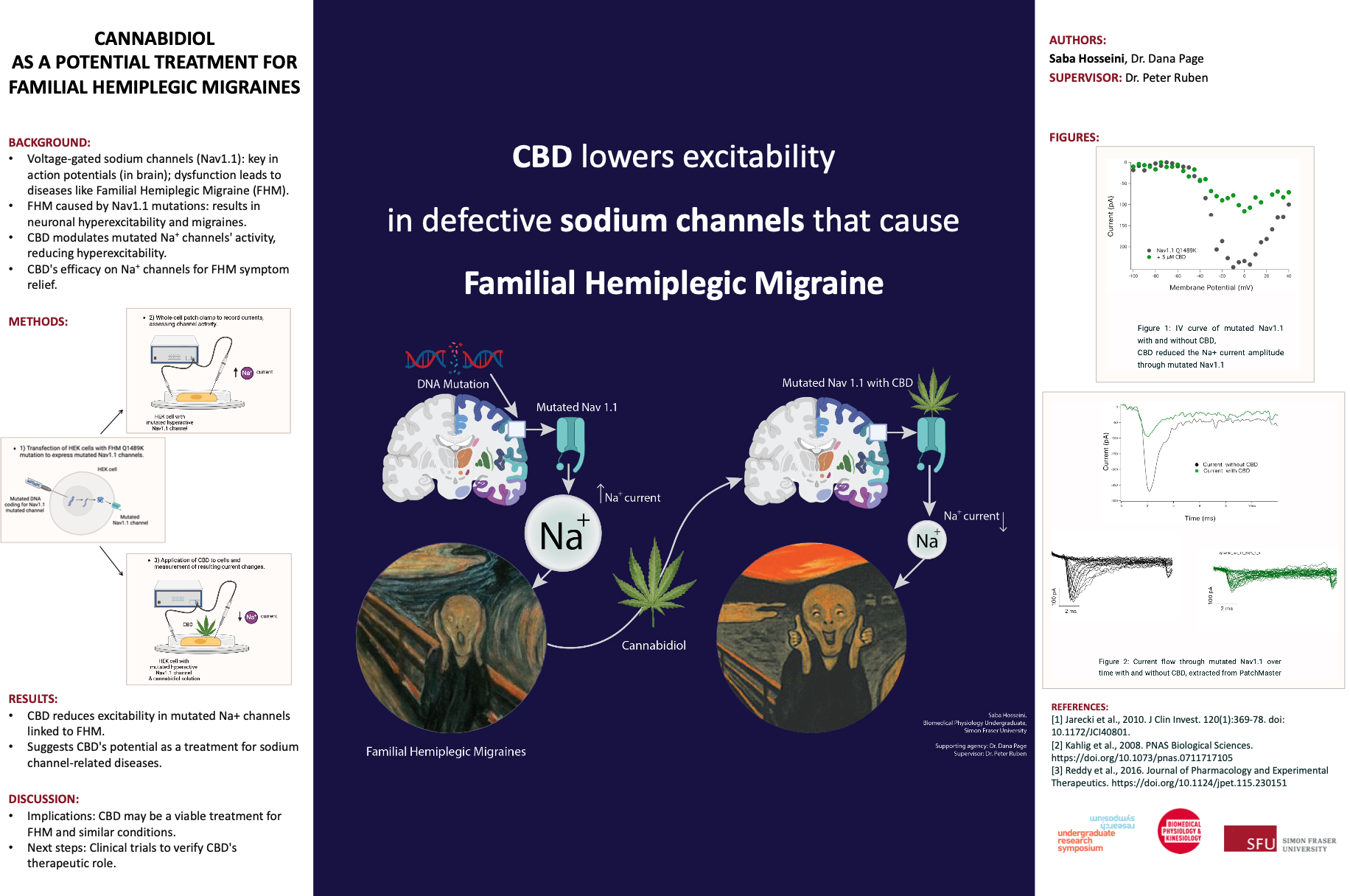Cannabidiol as a Potential Treatment for Familial Hemiplegic Migraines
Main Article Content
Abstract
Voltage-gated sodium channels, situated on cell membranes, are pivotal in initiating and propagating action potentials. An action potential is a crucial electrical signal that enables a neuron to communicate with other neurons, which is essential for our thoughts, movements, and sensations. These processes are particularly vital in the excitable cells of the brain. Any alterations in these channels can lead to significant physiological impacts and are often implicated in various diseases. For instance, Familial Hemiplegic Migraine (FHM) arises from mutations in the gene coding for Nav1.1, a specific protein forming voltage-gated sodium channel in neurons. These genetic changes cause increased neuronal excitability, which can trigger migraines.
Addressing this issue, there's a need for an inhibitor to reduce the heightened activity of these mutated Na+channels. Cannabidiol (CBD), a non-psychoactive extract from the cannabis plant, has been shown to modulate the activity of hyperexcitable Na+channels in several pathophysiological states, such as epilepsy, usually by decreasing their excitability. We hypothesized that CBD could also effectively mitigate the excitability of the ion channels responsible for FHM.
To test for this hypothesis, this research involved electrophysiological studies utilizing the patch-clamp technique. The preliminary data we collected indicates that CBD effectively diminishes the excitability of hyperactive mutated Na+channels linked with FHM. These observations propose that CBD may serve as a promising pharmacological treatment for genetically rooted diseases characterized by altered neuronal voltage-gated sodium channels.
Faculty Supervisor: Dr. Peter Ruben, Department of Biomedical Physiology and Kinesiology, Simon Fraser University
Research Team Member: Dr. Dana Page, Department of Biomedical Physiology and Kinesiology, Simon Fraser University
Article Details

This work is licensed under a Creative Commons Attribution-NonCommercial-NoDerivatives 4.0 International License.
References
Jarecki et al., 2010. J Clin Invest. 120(1):369-78. doi: 10.1172/JCI40801.
Kahlig et al., 2008. PNAS Biological Sciences. https://doi.org/10.1073/pnas.0711717105
Reddy et al., 2016. Journal of Pharmacology and Experimental Therapeutics. https://doi.org/10.1124/jpet.115.230151

